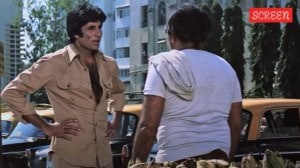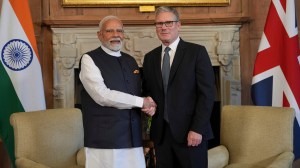‘To move away from rote memorisation’: Students in govt schools in Delhi to create learning material with teachers under new initiative
Samagra Shiksha-Delhi is the local chapter of the national Samagra Shiksha scheme, an integrated scheme for school education in India covering pre-school to Class 12.
 All government, New Delhi Municipal Council (NDMC), and Delhi Cantonment Board schools have been instructed to compulsorily adopt this during the 2025–26 academic year. (Representational image/File)
All government, New Delhi Municipal Council (NDMC), and Delhi Cantonment Board schools have been instructed to compulsorily adopt this during the 2025–26 academic year. (Representational image/File)Can students create teaching material? The government schools in Delhi are set to leverage multi-sensory learning with teaching tools — created in collaboration with students — as part of a new initiative.
Under the ‘Joyful Learning’ programme of Samagra Shiksha-Delhi, students from Classes VI to VIII will co-develop TLMs (teaching learning materials) with their teachers in core subjects such as Social Science and Mathematics, and even for languages.
“The aim is to move away from rote memorisation and passive listening and instead introduce tools that involve touch, sight, sound and interaction to support learning,” said an official, adding that the initiatives will also be evaluated from time to time on effectiveness, cost efficacy, ease of implementation and the ability to engage multiple senses.
Samagra Shiksha-Delhi is the local chapter of the national Samagra Shiksha scheme, an integrated scheme for school education in India covering pre-school to Class 12.
According to a circular issued by the Education department on July 24, the initiative is designed “to enable children to become motivated and engaged in classes through observation, experimentation, drawing inferences, model building, rational reasoning, and testability.” It also seeks “to promote student-teacher collaboration and communication”.
All government, New Delhi Municipal Council (NDMC) and Delhi Cantonment Board schools have been instructed to mandatorily adopt the initiative during the 2025–26 academic session.
The circular notes that “teaching-learning materials are indispensable in modern education because they enrich the learning experience by making it more interactive, accessible, and effective for students, while also providing teachers with better tools to explain, assess, and manage the classroom.”
These materials are to be developed using easily available and recyclable resources. “Incorporating students in the creation encourages deeper engagement, creativity, collaboration, and ownership of learning,” it states. “If the tools are co-created by teachers and students both, the onus of learning will be on both.”
The department explains that in Social Science, materials such as charts, maps or models help simplify complex ideas. For languages, visual and tactile aids support grammar and vocabulary acquisition.
“Multi-sensory learning with interactive activities cater to varying styles, ensuring that all students can engage with the content effectively,” the circular says.
The programme will roll out in four phases. At the school level, exhibitions held between July 15 and August 14 are being taken into consideration.
Each school has a Rs 6,000 fund allotted to prepare materials and organise the event. Selected entries will move to the zonal exhibitions from August 20 to 23, followed by district-level rounds in September. A final state-level exhibition will be held in November, as per the circular.
“This activity evolves the scope of promoting inquiry-based education and will motivate students to think critically and develop an early habit of innovative learning,” the circular states. “The creation of TLM by students can be an integral part of child-friendly pedagogies because it promotes active engagement, creativity, inclusivity, and collaboration.”












